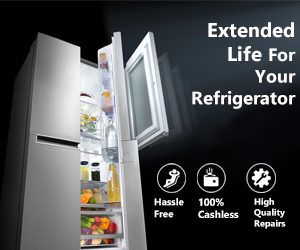As with everything technical in the electrical appliances, air conditioning also involves a specialized terminology. If you have been searching for an air-conditioner or talking to a serviceman, you may have found yourself wondering what on earth the terminologies and jargons mean. With this in mind, we’ve compiled a glossary of the most commonly used technical terms, words, and phrases that will help you while interacting with and AC serviceman. Brush up on these terms and you’ll find it much easier to understand the exact issue with your air-conditioner.
Air filter
Air filters are designed to trap dust and contaminants in the air from clogging up the indoor unit of an air conditioning system. They are manufactured from thermally bonded polyester fibre or a plastic resin-based net.
Air purifier
This product is specifically designed to remove allergens, pollutants, bacteria and odours from the air in your home. Some air purifiers can be integrated into existing air conditioning systems, while others are portable units.
Azeotrope/azeotropic mixture
The product resulting from the combination of two or three compounds that have identical vapour and liquid compositions. An azeotrope cannot be separated into its parts by distillation. Azeotropes will fractionate slightly and experience temperature glide outside of the identified azeotropic points.
Azeotropic point
The temperature where a liquid mixture boils and produces vapour with exactly the same composition as the liquid.
Blower
A piece of equipment designed to move air through a system. Usually refers to the air handling unit or air handler.
Bioaerosols
Microscopic living organisms suspended in the air. Bioaerosols grow and multiply in warm, humid places. British Thermal Unit (BTU): The BTU is a measurement of heat energy. To raise one pound of water by one degree Fahrenheit requires one BTU of heat. The greater the heating capacity of the system reflects a high BTU rating.
Charge
The amount of refrigerant in a system.
Composite Fan Blades
Blades that are designed with rugged materials and an exclusive angled design that improve operation and durability, even in the harshest environments.
Compressor
A compressor is a component of the outdoor air conditioner or heat pump that compresses and pumps refrigerant to sustain cooling requirements. It is the ‘pump’ that circulates vapour refrigerant throughout the system from the indoor evaporator to the outdoor condenser and back.
Condenser Coil
The condenser coil or sometimes known as an outdoor coil is the compressor is an outdoor component of an air conditioner or heat pump that either releases or collects heat, depending on the time of the year. It is a series of tubes filled with gas (vapour) refrigerant that carries heat from the home and removes it outdoors allowing the refrigerant to condense or liquefy and start the process again.
Condensing Unit
A device that condenses a substance from a gaseous to a liquid state, typically by cooling it. In the process, the latent heat is given up by the substance and will transfer to the condenser coolant.
Cubic Feet Per Minute (CFM)
A measurement of how many cubic feet of air pass by a stationary point in one minute. The more air being moved through the ductwork by the system, the higher the number is to the CFM.
Damper
Located in the ductwork is a moveable plate that regulates airflow and directs it to areas that need it most, which is typically used in a zoning application.
Ductless Mini-Split
A type of air conditioning system that does not use ducts to transfer cool air and instead the outdoor condenser unit is connected directly to an interior air handler. Due to this direct connection, generally, only one room or space can be cooled at a time making ductless mini-splits a viable option for room additions or add-ons, but potentially troublesome for whole-home solutions.
Can’t Live Without Your Air Conditioner
Extended the life of your AC with GoWarranty and extended its life.
Split System
Now one of the most popular types of air conditioning systems used in homes, a split system is ‘split’ into two units: one that’s inside, and one that’s outside. Relatively easy to install (as no ductwork is required), these systems are known for being quiet and energy-efficient.
Outdoor Unit
This is the part of an air conditioning system that contains the compressor, propeller fan, circuit board and heat exchange coil. It’s situated outside and pumps refrigerant to and from its companion indoor unit. You’ll often hear this unit referred to as the ‘condenser’ or ‘heat exchanger’.
Indoor Unit
The part of an air conditioning unit that’s located within the home, and provides the ‘conditioned’ air inside. This unit contains a heat exchange coil, filters, remote signal receiver and fan.
Multi split system
This is a split system where there’s more than one indoor unit attached to a single outdoor unit. The beauty of a multi-split system is that you can use it to heat or cool different areas of the house independently – or even maintain an even temperature in one large area by using two units. Such systems operate in either heating or cooling at one time.
Ducted system
Ducted systems include an internal fan coil installed into the roof space of a house. From this central location, a series of ducts are installed in multiple locations throughout the house, allowing you to heat and cool different areas of the home easily. This provides discreet air-conditioned comfort as the only visible components are the return air grilles, discharge grilles and controller.
EER (Energy Efficiency Ratio)
A ratio to determine the energy efficiency of an air conditioner. The higher the EER rating, the more efficient the unit. EER ratings are generally lower than SEER ratings because SEER ratings are seasonally adjusted while EER ratings are calculated against a fixed ambient temperature.
Efficiency
A measure of how much energy is used to accomplish a cycle, measured by Seasonal Energy Efficiency Ratio (SEER) or Energy Efficiency Ratio (EER). The higher the rating, the more efficient a system is and the lower your energy consumption will be.
Evaporator Coil
A series of tubes filled with liquid refrigerant that absorbs heat from the air as the liquid refrigerant is ‘evaporated’ into vapour.
Hydronic system
This is a typical heating and cooling system that uses ‘liquid heat transfer’ – in other words, heating up water and moving it through pipes installed under the floor.
Heating/cooling capacity
The capacity output figure indicates the amount of heating/cooling the unit can produce.
Heat Pump
An air conditioner that has a reversing valve allowing it to alternate between heating in the winter and cooling in the summer.
HSPF
An industry term that stands for Heating Seasonal Performance Factor. It is a measure of efficiency for air source heat pumps. A higher number represents higher efficiency.
HVAC
Heating, ventilation and air conditioning. This acronym refers to the entire discipline that surrounds air conditioning
Thermostat
You’ll probably be familiar with this one: simply, it’s the device that controls the temperature inside your home. Most thermostats consist of a sensor that monitors air temperature and relays this information to the air conditioning unit – enabling it to effectively heat or cool the space.
Zoning
This is a method of heating or cooling different areas (or rooms) within one house independently – usually by using separate controls, or by opening and closing dampers within ducts in each zone.
Heat pump
Another term for a reverse cycle air conditioner which can heat and cool indoor spaces. There are three main types: air-to-air, water source and geothermal. Heat pumps are popular for those living in climates with moderate heating and cooling needs.
Duct
This is a tube that carries air from a central fan coil to various areas of a house. Ducts can be round or rectangular and are made from a variety of materials including sheet metal, fibreglass and vinyl.
Commissioning
The final step in installing an air conditioning system! It involves a technician checking and testing every component in the system to make sure it all complies with technical codes and manufacturers standards. Once commissioning is completed, the system is ready to go.
Inverter technology
An inverter works like the accelerator of a car, gently increasing/decreasing power. Inverter based systems can achieve the desired room temperature quicker and steadily without fluctuations which means uninterrupted comfort and savings in running costs.
Programmable Thermostat
A thermostat with the ability to record different temperature and time settings for home heating and/or cooling equipment.
- R-22 Refrigerant: The old standard for residential air conditioners, now being phased out by the U.S. EPA. It’s an HCFC (hydrochlorofluorocarbon) refrigerant, often referred to by a brand name such as Freon®, used primarily in residential air conditioning systems. It is being phased out for its higher global warming potential (GWP) and ozone-depleting properties.
- R-410A Refrigerant: A chlorine-free refrigerant that meets the U.S. EPA’s newest, most stringent environmental guidelines. It’s a non-ozone depleting refrigerant that has replaced R-22 as the preferred refrigerant of choice in the U.S, Japan, and Europe. R-410A performs at a higher pressure than R-22 and requires the use of different equipment than with R-22.
- R-32: A successor to the R-410A refrigerant, R-32 is also non-ozone depleting and has 66% lower global warming potential (GWP) factor than R-410A.
Refrigerant
A chemical that produces a cooling effect while expanding or vaporizing. Generally, residential air conditioning units contain the standard R-22 refrigerant or Freon.
Refrigerant Lines
Refrigerant lines are two copper lines that connect the outdoor air conditioner or heat pump to the indoor evaporator coil.
Room Air Conditioner (Window Unit)
Standalone air conditioning unit that cools only where needed, usually installed in a window space. Generally less efficient than central air conditioning, but less expensive to operate.
SEER
A rating that expresses the efficiency of air conditioning equipment throughout an entire average cooling season, including both the hottest and coolest days. It stands for Seasonal Energy Efficiency Ratio. The higher the SEER rating, the more efficient the system.
Scroll Compressor
A specially designed compressor that works in a circular motion, as opposed to up-and-down piston.
Two-Stage Operation
Two-stage operation provides two levels of heating or cooling output for enhanced temperature control, energy efficiency and indoor air quality.
Variable Speed Motor
A motor that operates at a wide range of speeds to precisely control the distribution of heated and cooled air throughout the home.
Ventilator
A system that exchanges the stale and re-circulated indoor air with fresh, filtered outside air.
Zoning System
A heating and cooling system that creates customized temperature zones throughout the home for increased comfort and efficiency.
Is there a term you’ve heard that we haven’t included? Drop your feedback in the comments below and we will add it to our glossary.


Just desire to say your article is as astounding. The clarity for your post is just excellent and i can suppose you’re an expert on this subject. Fine along with your permission allow me to grab your RSS feed to keep up to date with the impending post. Thank you one million and please continue the gratifying work.